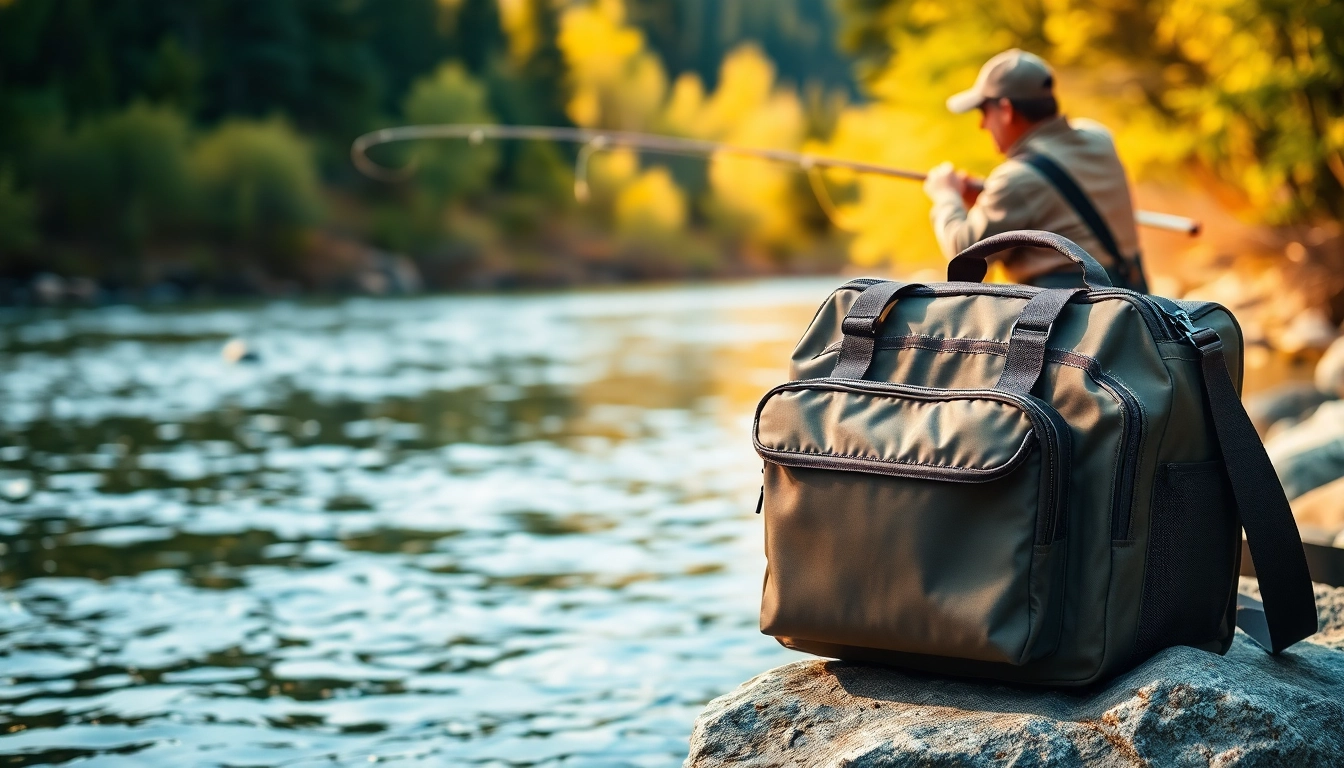Understanding Fly Fishing Bags
What is a Fly Fishing Bag?
A fly fishing bag is a specialized storage solution designed for anglers who engage in fly fishing. These bags come in various styles, sizes, and configurations to cater to the unique needs of fly fishers, whether they are wading in streams, casting from boats, or embarking on multi-day fishing trips. A quality Fly fishing bag helps organize tackle, keep gear secure, and allows quick access to your tools while you’re on the water.
Types of Fly Fishing Bags
There are several types of fly fishing bags available, each with its specific functions and advantages:
- Chest Packs: Worn on the front of the body, these packs keep essential items close at hand while allowing for freedom of movement.
- Hip Packs: These bags are worn around the waist and provide ample storage while maintaining portability, suitable for short trips.
- Backpacks: Ideal for longer fishing expeditions, backpacks can accommodate larger amounts of gear and often include additional compartments for hydration systems.
- Sling Packs: A versatile option that can be swung around for access. These packs strike a balance between functionality and convenience.
- Tote Bags: Best for organized group outings or day trips, allowing management of multiple items or equipment.
Key Features to Consider
When selecting a fly fishing bag, consider the following key features:
- Water Resistance: A good fly fishing bag should protect your gear from splashes or rain. Look for fabrics treated with waterproof coatings or fully waterproof materials.
- Storage Compartments: Multiple compartments help organize tackle, making it easier to find and access your tools when needed.
- Comfort and Fit: Look for adjustable straps and ergonomic designs that distribute weight evenly, as comfort is essential during long fishing sessions.
- Durability: High-quality materials that resist wear and tear are crucial for longevity, as fishing environments can be harsh and demanding.
- Accessibility: Choose a bag with easy access pockets or quick-release buckles, so you can retrieve tools without hassle.
Benefits of Using a Proper Fly Fishing Bag
Enhanced Organization and Accessibility
One of the primary benefits of using a dedicated fly fishing bag is improved organization. Unlike regular bags or backpacks, these bags come with designated spaces for flies, tools, and other gear. This feature not only enhances efficiency when retrieving necessary items but also helps ensure that your critical equipment isn’t lost during outings. With your fishing tools at your fingertips, you can focus more on casting and less on searching through clutter.
Durability Against Elements
Fly fishing often means facing various environmental challenges, ranging from water exposure to rugged terrain. Investing in a high-quality fly fishing bag can safeguard your gear from adverse weather conditions. Most fly fishing bags are designed with durable, water-resistant materials that can handle the demands of fishing expeditions, reducing the need for replacement over time.
Versatility for Different Fishing Styles
Different fishing spots require different gear and setups. A proper fly fishing bag accommodates diverse fishing styles, whether you’re negotiating shallow streams or navigating larger lakes. These bags adapt well to the angler’s needs depending on fishing locations, seasons, and even the type of fish targeted, providing unmatched versatility.
Choosing the Right Fly Fishing Bag for Your Needs
Assessing Your Fishing Habits
Before making a purchase, take time to assess your fishing habits. Do you prefer going on short day trips, or do you take extensive multi-day excursions? For short outings, a compact sling or hip pack will suffice, while multi-day trips may require a larger backpack with ample storage space. Additionally, consider whether you typically fish in rivers, lakes, or other environments, as this influences the type of bag that will best meet your needs.
Capacity and Storage Options
Evaluate how much gear you typically carry. If you only need to carry a handful of flies, then a smaller pack may do the trick. However, if you carry more tackle or clothing, a larger bag with multiple compartments will help keep everything organized. Understanding your storage needs is crucial for selecting an appropriate size and style of bag.
Price vs. Quality Considerations
While most anglers recognize that price often reflects quality, it is essential to balance between a good deal and a reliable product. Lower-priced bags may offer immediate savings but can result in poor performance or the need for early replacement. Conversely, more expensive options may come with enhanced features and durability. Consider your budget alongside the various options available, and choose a fly fishing bag that represents the best value for your needs.
Maintaining Your Fly Fishing Bag
Cleaning and Care Tips
To prolong the life of your fly fishing bag, ensure regular maintenance and cleaning. The following tips can help keep your bag in excellent condition:
- Wipe Down: After each fishing trip, take a moment to wipe down the exterior with a damp cloth to remove dirt, mud, and salt.
- Detachable Liners: If your bag has removable compartments or liners, wash them separately according to care instructions for thorough cleaning.
- Avoid Harsh Chemicals: Steer clear of strong detergents that can degrade the materials or coating of the bag.
Repairing Minor Damages
Minor damages, such as frayed stitches or small tears, can often be repaired without professional assistance. Use a needle and durable thread to mend stitching, and consider fabric glue for small holes if sewing isn’t possible. Being proactive in repair will extend the lifespan of your bag and ensure it remains functional during fishing adventures.
When to Replace Your Bag
Despite regular maintenance, all bags eventually reach the end of their usable life. Signs indicating it’s time for a replacement include excessive wear and tear, inability to keep water out, or structural failures like broken zippers or torn fabric. When you notice these conditions, it’s often worth it to invest in a replacement rather than attempting further repairs.
Top Fly Fishing Bag Brands to Consider
Comparison of Popular Options
When searching for the ideal fly fishing bag, several reputable brands come to mind. They offer a range of products catering to various preferences and price points. Key aspects to compare include material quality, design efficiency, storage options, and user comfort. By analyzing these details, you can make an informed choice based on your specific fishing needs.
User Reviews and Recommendations
Before finalizing your decision, it can be insightful to explore user reviews and community recommendations online. Reading about experiences from fellow anglers can provide valuable insights into functionality and performance that brands may not cover. Often, fishermen share their personal tips regarding specific models, helping you choose the optimal bag.
Where to Buy Fly Fishing Bags
Fly fishing bags are widely available through various outlets. Local sporting goods stores may offer the chance to try bags in person, allowing you to assess comfort and fit. Online retailers can provide a broader selection and often include user reviews and comprehensive product descriptions to aid your decision-making process. Whichever route you choose, ensure you explore your options to find the best fly fishing bag that fits your needs.




